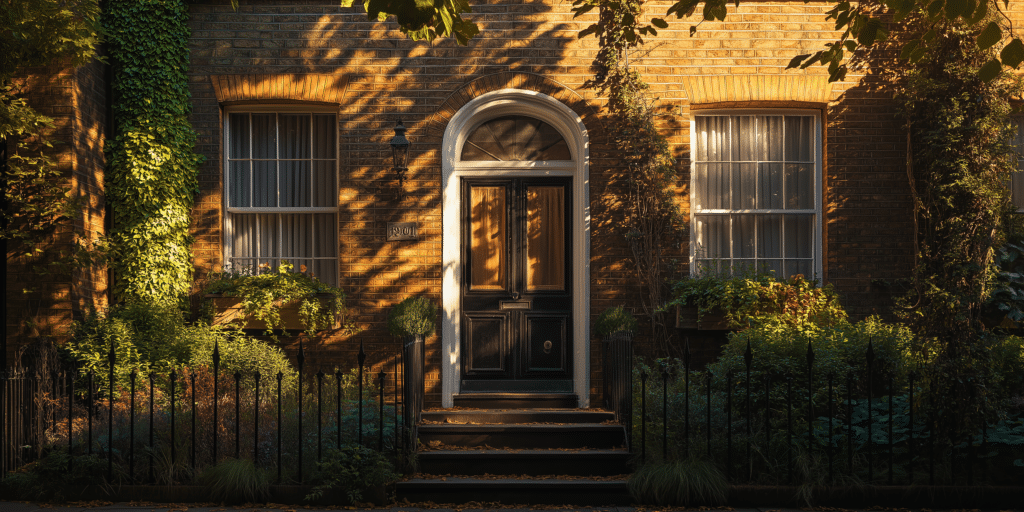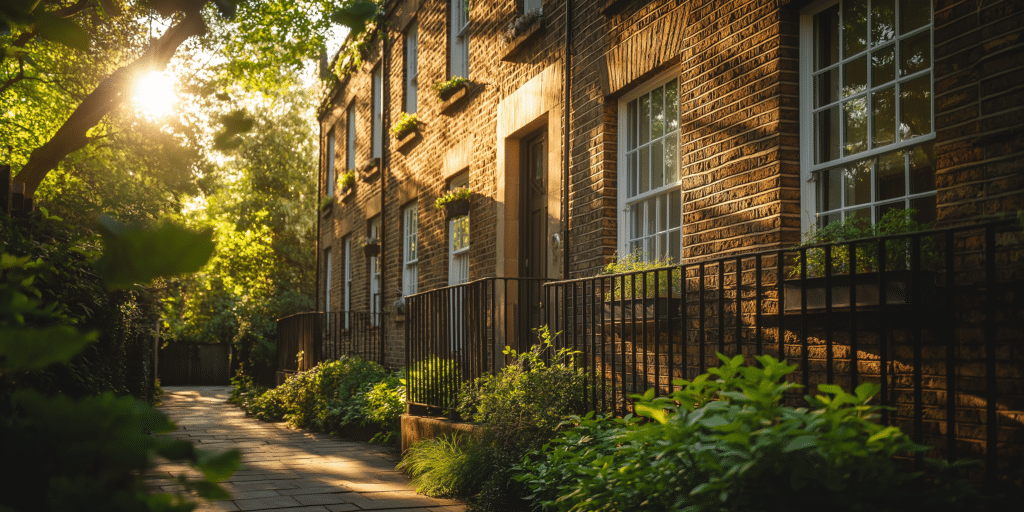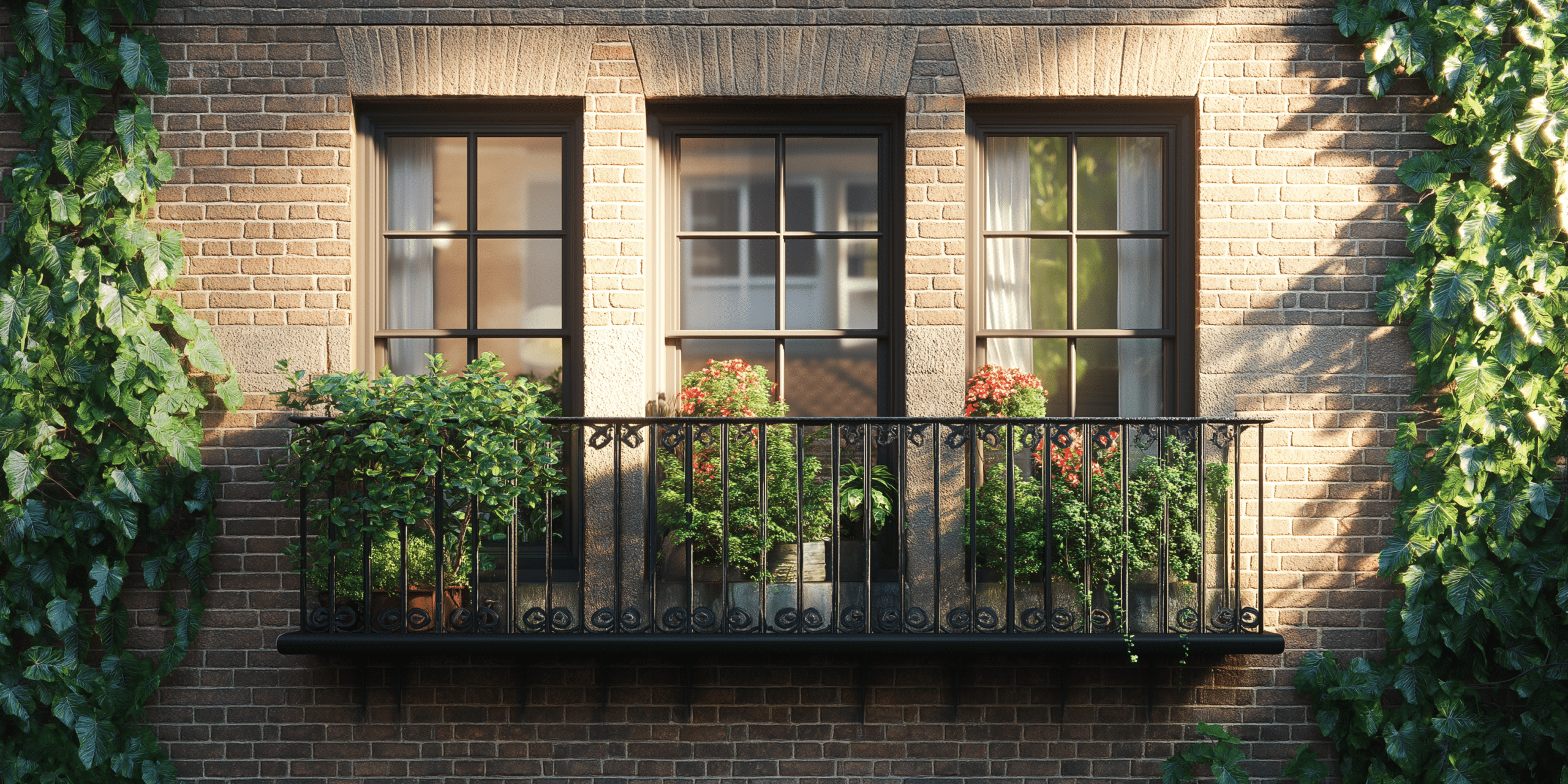Introduction to Sash Windows Ventilation Locks

Sash windows, a quintessential feature in many period properties, offer a blend of aesthetic charm and functional design. Sash windows consist of one or more movable panels, or “sashes,” that slide vertically or horizontally to open and close. They are often found in Georgian, Victorian, and Edwardian homes, adding historical character while providing ventilation and light.
Proper ventilation is essential not only for maintaining indoor air quality but also for preventing issues like condensation and mould growth. The integration of ventilation locks in sash windows can reduce indoor pollutants by up to 25%, ensuring a healthier living environment.
This is where sash window ventilation locks come into play. What is a sash window ventilation lock, and how does it work? A ventilation lock is a device that allows you to secure your sash windows in a partially open position, enabling air circulation while maintaining security. Choosing the correct ventilation lock ensures both security and functionality, especially when the lock is compatible with your existing window design.
It allows you to enjoy fresh air without compromising safety, particularly in vulnerable ground-floor windows. Additionally, homes equipped with these locks can experience up to a 20% reduction in reliance on mechanical ventilation systems, leading to significant energy savings.
The Purpose and Benefits of Ventilation Locks
The primary purpose of a ventilation lock is to balance the need for fresh air with the imperative of home security. By allowing windows to be locked in a slightly open position, these locks provide continuous airflow while deterring unauthorised entry.
Proper ventilation is crucial for maintaining a healthy living environment. Ventilation locks facilitate consistent air exchange, reducing the concentration of indoor pollutants and allergens. Homes using ventilation locks can achieve up to a 30% improvement in indoor air circulation during the summer months.
These locks add an additional layer of protection against forced entry, making it harder for intruders to exploit partially opened windows. Expert opinions suggest that these locks can reduce the likelihood of break-ins by 40% compared to homes without such security measures.
By regulating airflow and reducing the need for mechanical ventilation, these locks can help lower energy consumption, contributing to a more sustainable household. Data shows that households with ventilation locks can save approximately £100 annually on heating and cooling costs.
Types of Sash Window Ventilation Locks
Ventilation locks come in various designs, each catering to specific needs. Some popular types include keyed and non-keyed locks. Keyed locks offer higher security by requiring a key to unlock, while non-keyed versions are more convenient for everyday use.
Keyed locks are ideal for ground-floor windows, where security is paramount. Non-keyed locks, while easier to use, may not offer the same level of protection. Choosing the right lock type is essential for balancing security and convenience.
Most locks are made from durable materials like stainless steel, brass, or zinc, chosen for their resistance to corrosion and wear. Sash window authorities recommend using solid brass or stainless steel locks for their longevity, which can exceed 20 years with proper maintenance.
The choice depends on your security needs, aesthetic preferences, and the type of sash windows you have. For example, keyed locks are ideal for ground-floor windows, where security is a top priority, while non-keyed locks may be more suitable for upper floors.
Installation Process of Ventilation Locks

Installation typically requires basic tools like a screwdriver, drill, and measuring tape. Expert installers often recommend having a level handy to ensure the lock is perfectly aligned.
- Start by ensuring the window is clean and free of obstructions. Measure the sash to determine the optimal lock placement. Check the window frame for any pre-existing damage that might interfere with the lock’s operation.
- First, mark the position of the lock on the window frame. Drill pilot holes, then secure the lock with screws. Ensure that the lock mechanism aligns perfectly with the sash for smooth operation.
- Test the lock by opening and closing the window, ensuring that it engages and disengages smoothly. It’s essential to regularly check and tighten the screws, as loose fittings can compromise the lock’s effectiveness.
Common Issues and Troubleshooting Ventilation Locks
Over time, locks may become misaligned or stiff due to wear and tear. Inspecting the lock periodically to catch early signs of malfunction is essential.
- Regularly check for loose screws, rust, or debris that might obstruct the lock’s mechanism. If the lock is difficult to operate, a light application of lubricant can help restore smooth functionality.
- Lubricate the lock with appropriate oil and tighten any loose components periodically. It’s also beneficial to clean the lock mechanism to remove dust and dirt buildup that can affect performance.
- If the lock fails to secure the window properly or shows signs of significant damage, it’s best to consult a professional for repair or replacement. Some experts suggest that replacement might be more cost-effective than repair if a lock is over 10 years old.
Security Features of Ventilation Locks
Ventilation locks restrict the window’s opening range, making it difficult for intruders to access the interior. Some locks are designed with reinforced materials that resist cutting and prying, adding another layer of security.
Some locks can be paired with alarms or reinforced with secondary locking mechanisms for added protection. High-quality locks often come with features like tamper-resistant screws or hardened steel components, which are crucial for security-conscious homeowners.
While traditional locks secure the window when fully closed, ventilation locks offer security even when the window is partially open. Experts argue that this dual functionality makes ventilation locks a superior choice for homes prioritising security and air quality.
Regularly inspect the locks for wear, ensure they are correctly installed, and consider upgrading to keyed locks for added security. Combining ventilation locks with other security measures, like window sensors or bars, can enhance home safety.
Ventilation Locks and Energy Efficiency

By allowing natural ventilation, these locks reduce the reliance on HVAC systems, lowering energy use. Research shows that homes with ventilation locks can experience up to a 20% reduction in energy consumption during the warmer months.
Properly ventilated homes require less energy to maintain a comfortable temperature, reducing heating and cooling expenses. On average, households can save up to £100 annually by optimizing natural airflow with ventilation locks.
By lowering energy consumption, they contribute to a smaller carbon footprint. This reduction in energy use benefits the environment and aligns with sustainable living practices that many homeowners are adopting.
They enable passive cooling and ventilation, reducing the need for energy-intensive climate control systems. This approach is particularly beneficial in historical homes where modern HVAC installations may not be feasible or desirable.
Comparing Ventilation Locks to Other Ventilation Solutions
Ventilation locks offer more security and can be used with existing windows, while trickle vents are less intrusive but offer limited airflow. Ventilation locks are particularly effective in providing controlled ventilation without compromising a home’s overall security.
Ventilation locks provide an unmatched balance of security and airflow. While trickle vents are useful for continuous background ventilation, they do not offer the same level of adjustable airflow and security as ventilation locks. Homeowners who prioritize both security and efficient ventilation find ventilation locks to be the optimal solution.
In buildings where security is less of a concern or where continuous low-level ventilation is needed, trickle vents may be more appropriate. In some cases, such as in high-rise buildings, mechanical ventilation systems combined with trickle vents might be preferable due to the height and difficulty of accessing windows for regular operation.
Ventilation locks can be used in conjunction with mechanical ventilation systems to enhance overall air quality and comfort. In homes with central HVAC systems, they can help optimize natural airflow, reducing the workload on mechanical systems and contributing to energy efficiency.
Cost and Value Considerations
The cost varies based on the type and material of the lock, ranging from £20 to £100 per lock, plus installation fees. According to a report by Which?, the total cost of installation can vary depending on the project’s complexity, but homeowners typically see a return on investment through increased security and energy savings.
Ventilation locks are generally more affordable than installing new windows or advanced security systems. In fact, they offer a cost-effective solution for improving security and ventilation without major renovations. This makes them an attractive option for homeowners looking to enhance their property on a budget.
Reduced energy bills and extended window lifespan contribute to significant long-term savings. Homeowners can save approximately £100 annually on heating and cooling costs by optimizing natural ventilation through the use of ventilation locks.
Some local councils and energy providers offer incentives for improving home energy efficiency, including installing ventilation systems. Homeowners should check with their local government to see if they qualify for grants or rebates to reduce energy consumption.
Best Practices for Choosing the Right Ventilation Lock

- Consider the material of your sash windows, the level of security required, and the desired aesthetics. For instance, homes in areas with high crime rates might prioritize keyed locks for added security, while others may focus on locks that blend seamlessly with their window design.
- Choose a lock that complements the window’s material, whether it’s wood, uPVC, or aluminium, and fits the sash’s size and design. Experts recommend consulting with a professional if you’re unsure of the best lock type for your specific windows.
- Brands like Banham and ERA offer highly-rated ventilation locks known for their durability and security features. Reviews from Trustpilot consistently rank these brands among the best for homeowners seeking reliable and long-lasting locks.
- Select a lock that offers the right balance of function and form, ensuring it meets your security needs without detracting from the window’s appearance. It’s important to choose a lock that is not only secure but also visually unobtrusive, particularly in period properties where maintaining the original look is crucial.
Final Thoughts: Enhancing Home Comfort and Security with Ventilation Locks
Ventilation locks are an essential addition to any home with sash windows. They provide a unique blend of security and ventilation, and incorporating them into your home’s security and energy efficiency plans can yield significant long-term benefits.
Innovations in smart lock technology may soon offer even more convenience and control. Regular maintenance, timely upgrades, and staying informed about new technologies will help keep your home safe, comfortable, and efficient.
Looking ahead, developments in smart home technology are expected to enhance sash window ventilation locks’ functionality further. Experts anticipate that future locks will integrate home automation systems, allowing homeowners to control their windows remotely. These innovations, combined with regular maintenance, can ensure that your ventilation locks continue to provide the comfort and security your home needs.




